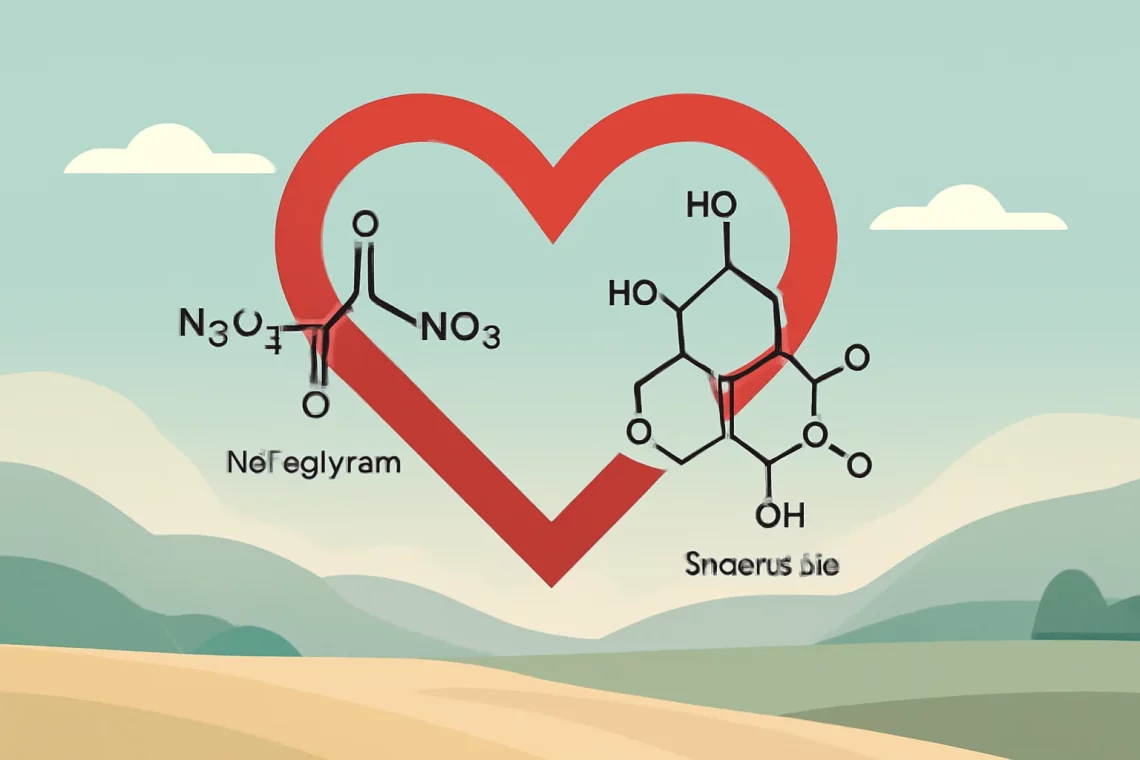
Nitroglycerin vs Isosorbide: Which Is Right for Your Heart Health?
Nitroglycerin and isosorbide are two medications commonly used in the management of cardiovascular conditions, particularly those related to angina pectoris and heart failure. Both of these compounds belong to a class of drugs known as nitrates, which are essential for dilating blood vessels and improving blood flow to the heart. This vasodilatory effect can significantly alleviate the symptoms of chest pain and reduce the workload on the heart.
Understanding the differences and similarities between nitroglycerin and isosorbide is vital for patients and healthcare providers alike. These medications, while serving similar purposes, have distinct properties, mechanisms of action, durations of effect, and potential side effects. Consequently, a thorough comprehension of each medication can guide treatment choices and improve patient outcomes. In this article, we will delve into the characteristics, uses, and considerations of nitroglycerin and isosorbide.
Understanding Nitroglycerin
Nitroglycerin is a well-established medication primarily used for the treatment of angina pectoris, a condition marked by chest pain due to reduced blood flow to the heart. It works by relaxing and dilating blood vessels, which enhances blood flow to the heart muscle and alleviates the pain associated with angina attacks.
One of the most significant advantages of nitroglycerin is its rapid onset of action. When administered sublingually (under the tongue) or via transdermal patches, nitroglycerin can provide quick relief from acute angina episodes. This makes it an invaluable tool in emergency situations, where immediate relief is necessary.
However, nitroglycerin also comes with its own set of considerations. Patients may experience side effects such as headaches, dizziness, and low blood pressure. It’s essential for individuals using nitroglycerin to be aware of these potential adverse effects and discuss them with their healthcare provider. Additionally, tolerance can develop with prolonged use, meaning that over time, patients may require higher doses to achieve the same therapeutic effect.
Nitroglycerin is often prescribed for both acute and chronic management of angina. In acute cases, a sublingual tablet or spray can provide quick relief, while patches or long-acting formulations are typically used for long-term management. Importantly, patients should be educated on the proper use of nitroglycerin, including when to seek medical attention if their symptoms do not improve or worsen.
Overall, nitroglycerin remains a cornerstone in the treatment of angina, offering rapid relief and improved quality of life for many patients.
The Role of Isosorbide
Isosorbide, particularly in its dinitrate and mononitrate forms, is another key player in the management of cardiovascular conditions, especially angina pectoris. Like nitroglycerin, isosorbide works as a vasodilator, promoting improved blood flow to the heart and reducing chest pain.
Isosorbide is typically used for the long-term prevention of angina rather than for immediate relief. The extended-action formulations of isosorbide mononitrate allow for once-daily dosing, which can enhance patient adherence to their medication regimen. This is particularly beneficial for individuals who experience frequent angina episodes, as it helps maintain stable blood flow to the heart throughout the day.
While isosorbide is effective in managing angina, it is essential to monitor for side effects. Common adverse effects include headaches, dizziness, and flushing, similar to those experienced with nitroglycerin. Tolerance can also develop with long-term use, necessitating careful management and periodic reassessment of the patient’s medication regimen.
In some cases, isosorbide may be preferred over nitroglycerin due to its longer duration of action and more stable pharmacokinetics. This can be particularly advantageous for patients who require ongoing prevention of angina symptoms without the need for multiple daily doses.
Healthcare providers must work closely with patients to determine the most appropriate medication for their specific needs, taking into account individual responses and any potential interactions with other medications.
Comparing Nitroglycerin and Isosorbide
When comparing nitroglycerin and isosorbide, several factors must be considered, including their pharmacokinetics, indications, side effects, and patient preferences. Both medications serve the primary purpose of relieving angina by dilating blood vessels and improving blood flow to the heart, but they do so in different ways and under different circumstances.
Nitroglycerin is often the go-to choice for immediate relief of acute angina episodes due to its rapid onset of action. In contrast, isosorbide is more suitable for long-term management and prevention of angina, providing a more stable level of medication in the system. This distinction is crucial for patients who may experience varying frequencies and intensities of angina attacks.
Another important consideration is the side effect profile of each medication. While both nitroglycerin and isosorbide can cause headaches and hypotension, the onset and duration of these effects may differ. Patients may respond differently to each medication, and factors such as comorbidities and concurrent medications must also be taken into account.
Patient preference plays a significant role in determining which medication is best suited for individual needs. Some patients may prefer the convenience of once-daily dosing with isosorbide, while others might require the short-acting option provided by nitroglycerin for occasional angina attacks.
Ultimately, the decision between nitroglycerin and isosorbide should involve a collaborative discussion between the patient and their healthcare provider, taking into consideration the patient’s lifestyle, medical history, and specific angina patterns.
Conclusion: Choosing the Right Medication
In summary, both nitroglycerin and isosorbide are valuable medications in the treatment of angina pectoris and related cardiovascular conditions. Understanding their differences, uses, and potential side effects is essential for effective management.
Patients should be proactive in discussing their symptoms and treatment options with their healthcare provider to determine the most appropriate medication for their specific needs. Whether opting for the rapid relief offered by nitroglycerin or the long-term stability provided by isosorbide, a personalized approach to treatment can significantly enhance patient outcomes and quality of life.
It is important to remember that this article is not a substitute for medical advice. Always consult with a healthcare professional for personalized recommendations and treatment options regarding any health issues.




